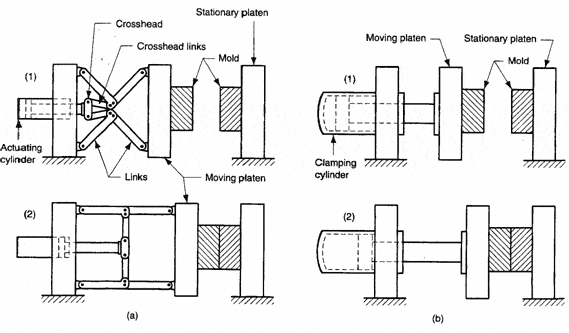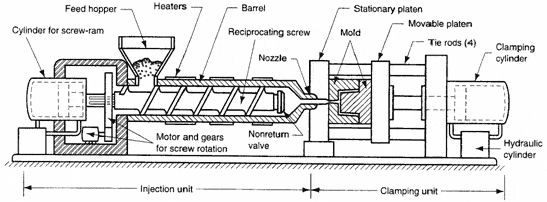
- * No oxidation takes place
- * Good mechanical properties due to severe cold working as long as the temperatures created are below the re-crystallization temperature
- * Good surface finish with the use of proper lubricants
Vacuum sintering furnace has been used for a long time,There will be some impurities left in the furnace. We need regular maintenance to avoid damage to the equipment.

Rotational molding uses gravity inside a rotating mold to achieve a hollow form. Also called rotomolding, it is an alternative to blow molding for making large, hollow shapes. It is used principally for thermoplastic polymers, but applications for thermosets and elastomers are becoming more common. Rotomolding tends to favor more complex external geometries, larger parts, and lower production quantities than blow molding. The process consists of the following steps: (1) A predetermined amount of polymer powder is loaded into the cavity of a split mold. (2) The mold is then heated and simultaneously rotated on two perpendicular axes, so that the powder impinges on all internal surfaces of the mold, gradually forming a fused layer of uniform thickness. (3) While still rotating, the mold is cooled so that the plastic skin solidifies. (4) The mold is opened, and the part is unloaded. Rotational speeds used in the process are relatively slow. It is gravity, not centrifugal force, that causes uniform coating of the mold surfaces.
Molds in rotational molding are simple and inexpensive compared to injection molding or blow molding, but the production cycle is much longer, lasting perhaps ten minutes or more. To balance these advantages and disadvantages in production, rotational molding is often performed on a multicavity indexing machine, such as the three-station machine shown below The machine is designed so that three molds are indexed in sequence through three workstations. Thus, all three molds are working simultaneously. The first workstation is an unload-load station where the finished part is unloaded from the mold, and the powder for the next part is loaded into the cavity. The second station consists of a heating chamber where hot-air convection heats the mold while it is simultaneously rotated. Temperatures inside the chamber are around 3750C(7000F), depending on the polymer and the item being molded. The third station cools the mold, using forced cold air or water spray, to cool and solidify the plastic molding inside.
A fascinating variety of articles are made by rotational molding. The list includes hollow toys such as hobby horses and playing balls; boat and canoe hulls, sandboxes, small swimming pools; buoys and other flotation devices; truck body parts, automotive dashboards, fuel tanks; luggage pieces, furniture, garbage cans; fashion mannequins; large industrial barrels, containers, and storage tanks; portable outhouses, and septic tanks. The most popular molding material is polyethylene, especially HDPE. Other plastics include polypropylene, ABS, and high-impact polystyrene.



